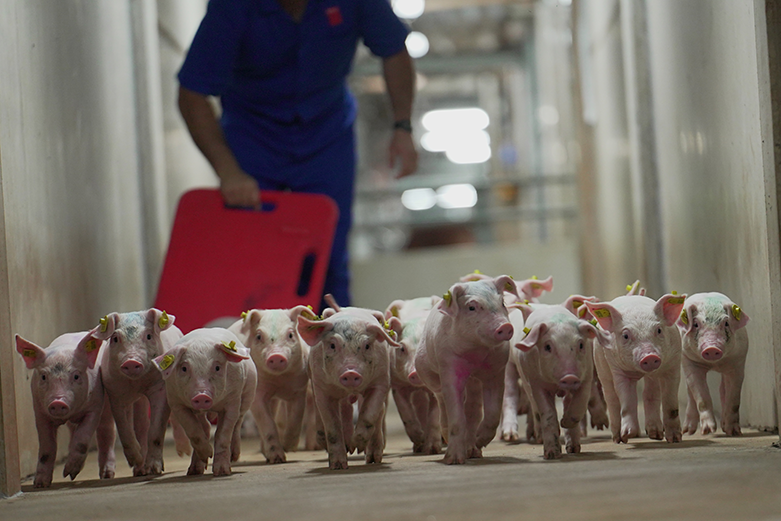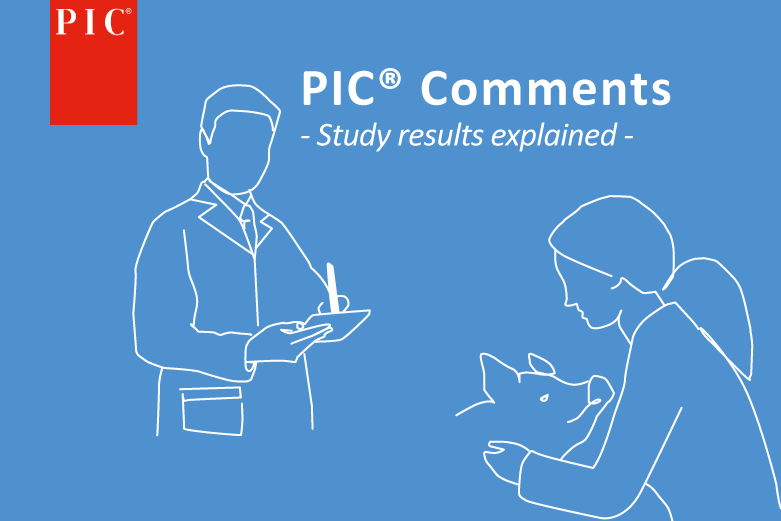Substantial evidence supports that management in gilts is absolutely necessary as a starting point for the reproductive future of the sows on the farm. The productive life of the sow is affected by different parameters, and the aim is to apply correct management in all its aspects to bridge the gap between the current high genetic potential and the standard productive results obtained in the industry.
We can intervene on different selection parameters to improve the productive life of the sows:
- Selecting for individual birth weight: Females with low birth weights increase pre-weaning mortality and have anoestrus problems.
- Selecting for litter weight: Sows with very small litters are associated with uterine growth problems, and this is manifested in sows born with low individual birth weights.
- Ratio of sows to males in the litter: Litters with more males than females increase the concentration of androgens in the uterus and cause some masculinisation of the sows.
Investing in specific breeding programmes represents an opportunity to improve the efficiency of the pig sector.
Source: Jennifer Patterson and George Foxcroft, AFNS, University of Alberta, Edmonton, Canada
El Comentario de PIC
María Ros Fuertes, Technical Service Manager PIC Southern Europe
Numerous factors affect the productive life of the sow. Among the most important are: Fertility, prolificacy, lactation mortality, nutrition, management, environment, health and the retention rate of the sow. The aim is for the gilts to express their full genetic potential, and this requires correct management and adequate health/adaptation.
A correct selection of the animals from the beginning is necessary to ensure their reproductive success in key parameters such as birth weight; we know that low birth weights of future gilts increase mortality in lactation and affect their hormonal development reproductively speaking. Also the high proportion of males to females in the litter causes problems in the hormonal development of the sows, as there is a masculinisation effect on the sows. Therefore, the selection of future sows should start at birth.
All these factors have an impact on the age at puberty of the future breeders. It has been shown that sows that reach puberty at a young age have a better retention rate on the farm, fewer non-productive days and a higher number of piglets weaned per sow per year. It should also be noted that increasing the age at first service from 220 to 300 days of age is associated with lower retention rates due to reproductive failure by 2.1% and a higher risk of overweight at first service which negatively affects the longevity of the sows.
In order to achieve an early puberty development of the sows, the male effect is indispensable. Having active males that secrete sufficient pheromones in their saliva and are in direct contact with the females (from the beginning of the early puberty stimulation programme), will help us to implement it correctly and to develop quality and long-lived gilts.
In order to achieve reproductive success, and ultimately the productive success of the gilts that we introduce in the farms, it is necessary to adapt the animals well and stimulate them early with the boar to promote early puberty (means, we should have a specific programme for the nulliparous animals that allows us to breed them at the optimum age and weight). For this, it is necessary to have a specific nutrition programme that will achieve a positive metabolic state in the sows, which will lead to a maximum reproductive development, as weight and growth in gilts are positively correlated. For every 10kg live weight there is a 1.1 increase in the observed corpora lutea. On the other hand, sows above 170kg liveweight at first service tend to have locomotor problems, and lower on-farm retention rates.
Originally published in “Investigación comentada” in the Spanish journal “SUIS”.




